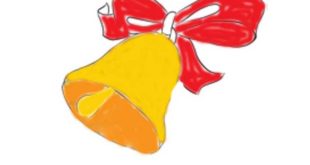Fancier and more expensive than your typical everyday pen, these pens are extremely versatile and can be used to create many different effects and line styles. Unlike most drawing implements, these pens can be customized to fit the task at hand. This is done by replacing the tip, called a nib, with a different design. Most calligraphy pens come bundled with several nibs, so try experimenting to see what you can do with each of them.
An additional note about these pens is that they don’t provide their own ink. You must periodically dip the nib in an inkwell (often purchased separately) to keep the ink flowing. Ultimately these pens can be hard to use, but with some practice you’ll get the hang of it.
Availability
There are two things to consider when shopping for calligraphy supplies. Firstly, you’ll only need to buy one pen and one set of nibs. The real expense is going to be the ink you need. Secondly, you’ll have to look around at an art supply or scrapbooking store to even find them, as they are something of an oddity.
Strengths
Like most ink based drawing tools, calligraphy pens make bold strokes that stand out from the paper. Thanks to their ability to flow along the page and change the shape of the stroke as they go, they are a proven tool for inking designs. One particularly unique ability that these pens have is the ability to make a type of fancy lettering called Blackletter. This very fancy lettering style is a real chore to do any other way.
Weaknesses
As with other ink based tools, the majority of the problems these pens might have are related to the ink they use. Perhaps the biggest downside is that they offer too much control. It’s easy to make a line too thick, and if there is any jitter in your motions the strokes will wobble around a bit. Unfortunately, since this is all in ink it’s also impossible to erase any unwanted smears, marks or wobbling.
Perhaps the biggest problem that these pens can create is an ink spill. Since you have a jar of ink sitting out, you’ll have to take special care not to let it spill. It only takes a nudge to cover your project, the table and floor in pigment.
Tips
- The thickness of the line is mostly controlled by the amount of pressure you put on the tip. Press harder for thicker lines, and lightly for thin ones.
- Draw slowly and carefully when using these pens. They flow over the page much faster than other tools and you might be surprised how easily mistakes can be made when moving quickly.
- Practice using your pen often. In particular, practice drawing curves on a piece of scrap paper to get familiar with how your pen moves across the page.
- To reduce smears, plan ahead as you draw. Always work so that you are moving your hand away from recently drawn lines, and give the ink time to dry. You may need to take several sessions to finish a complex drawing.
 Drawn light
Drawn light



